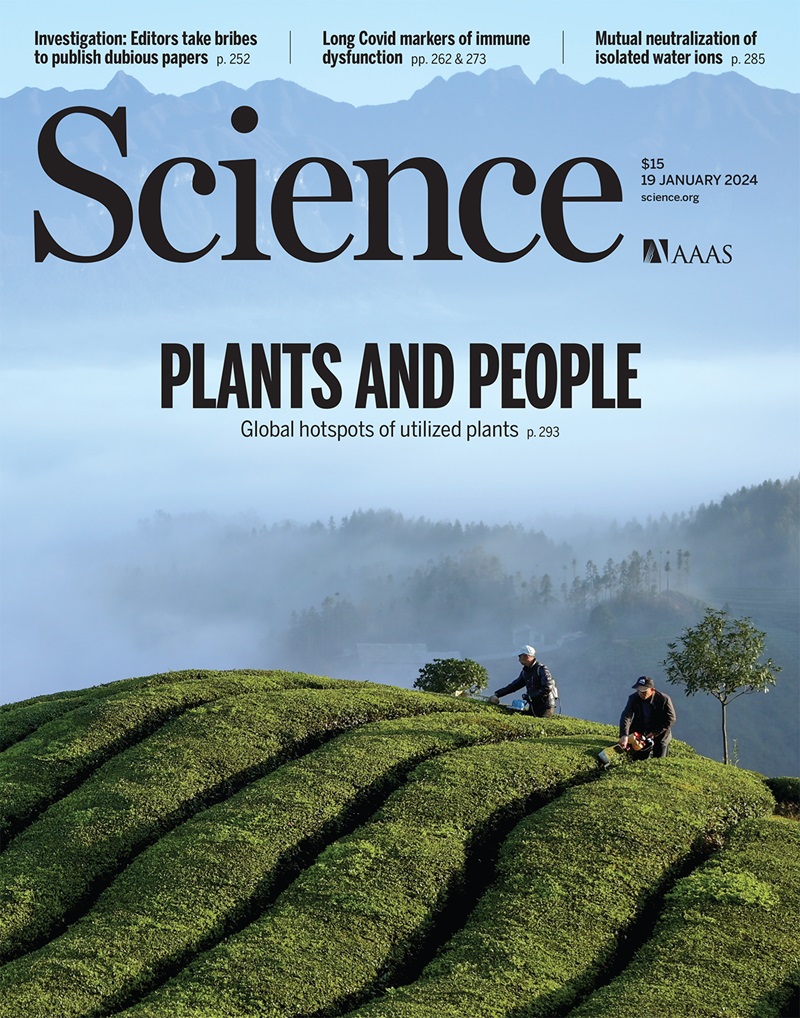Mining the CRBN target space redefines rules for molecular glue–induced neosubstrate recognition
IF 45.8
1区 综合性期刊
Q1 MULTIDISCIPLINARY SCIENCES
引用次数: 0
Abstract
The CRL4CRBN E3 ubiquitin ligase is the target of molecular glue degrader compounds that reprogram ligase specificity to induce the degradation of clinically relevant neosubstrate proteins. Known cereblon (CRBN) neosubstrates share a generalizable β-hairpin G-loop recognition motif that allows for the systematic exploration of the CRBN target space. Computational mining approaches using structure- and surface-based matchmaking algorithms predict more than 1600 CRBN-compatible G-loop proteins across the human proteome, including the newly discovered helical G-loop motif, and identify the noncanonical neosubstrate binding mode of VAV1 that engages CRBN through a molecular surface mimicry mechanism. This work broadens the CRBN target space, redefines rules for neosubstrate recognition, and establishes a platform for the elimination of challenging drug targets by repurposing CRL4CRBN through next-generation molecular glue degraders.

挖掘CRBN靶空间重新定义了分子胶诱导的新底物识别规则
CRL4 CRBN E3泛素连接酶是分子胶降解化合物的靶标,这些化合物重编程连接酶的特异性,诱导临床相关的新底物蛋白的降解。已知的小脑(CRBN)新底物共享一个可推广的β-发夹g环识别基序,允许系统地探索CRBN靶空间。使用基于结构和表面匹配算法的计算挖掘方法预测了人类蛋白质组中超过1600种CRBN兼容的G-loop蛋白,包括新发现的螺旋G-loop基序,并通过分子表面模仿机制确定了VAV1与CRBN结合的非规范新底物结合模式。这项工作拓宽了CRBN靶标空间,重新定义了新底物识别的规则,并通过下一代分子胶降解剂重新利用CRL4 CRBN,为消除具有挑战性的药物靶标建立了一个平台。
本文章由计算机程序翻译,如有差异,请以英文原文为准。
求助全文
约1分钟内获得全文
求助全文
来源期刊

Science
综合性期刊-综合性期刊
CiteScore
61.10
自引率
0.90%
发文量
0
审稿时长
2.1 months
期刊介绍:
Science is a leading outlet for scientific news, commentary, and cutting-edge research. Through its print and online incarnations, Science reaches an estimated worldwide readership of more than one million. Science’s authorship is global too, and its articles consistently rank among the world's most cited research.
Science serves as a forum for discussion of important issues related to the advancement of science by publishing material on which a consensus has been reached as well as including the presentation of minority or conflicting points of view. Accordingly, all articles published in Science—including editorials, news and comment, and book reviews—are signed and reflect the individual views of the authors and not official points of view adopted by AAAS or the institutions with which the authors are affiliated.
Science seeks to publish those papers that are most influential in their fields or across fields and that will significantly advance scientific understanding. Selected papers should present novel and broadly important data, syntheses, or concepts. They should merit recognition by the wider scientific community and general public provided by publication in Science, beyond that provided by specialty journals. Science welcomes submissions from all fields of science and from any source. The editors are committed to the prompt evaluation and publication of submitted papers while upholding high standards that support reproducibility of published research. Science is published weekly; selected papers are published online ahead of print.
 求助内容:
求助内容: 应助结果提醒方式:
应助结果提醒方式:


